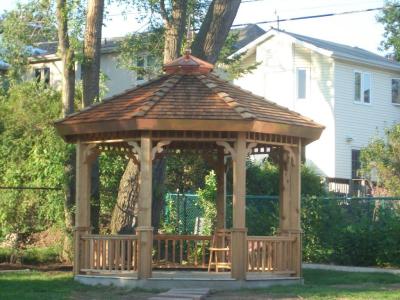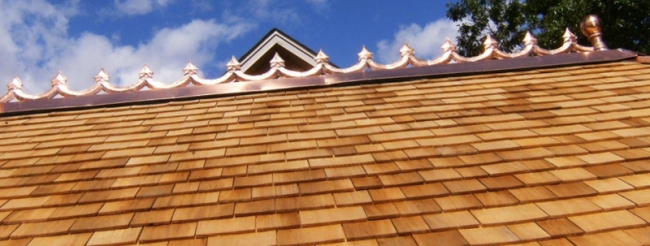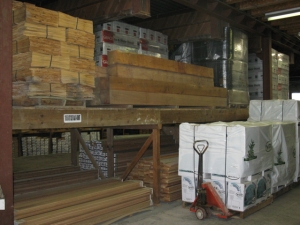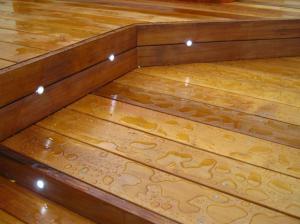Cedar roofing is an eco friendly, environmentally sustainable, green product. Every year, more than 175 million seedlings are planted in B.C. to reforest areas that have been harvested. Young, fast growing forests absorb the most carbon dioxide and release oxygen, cleaning our air. The harvesting and production of cedar shingles and shakes has very little environmental impact, low pollution and best of all, once the product is ready to be replaced it is biodegradable. The cedar shingle or shake provides natural additional insulation to your home, the wood keeps the heat in your house in the winter therefore cutting down on heating costs. The cedar shingle is cut on both sides by a saw, making them a smooth, refined surface product. Cedar shakes are split on the surface side to create a more rough and rustic look. Cedar has a built in protection not needing added chemicals before installation, making it the more green choice. Let’s make your home beautiful and “green” with Cedar roofing!
Tag Archives: cedar
My cedar outdoor project is done, now what?
 How? When? and Why? Should I protect my cedar project are great questions that are repeatedly brought up when cedar is the choice made for your project. Cedar wood only needs to sit before staining if it is still holding sap moisture, if it is then one season is fine to sit. The how? Every paint and stain manufacturer has their own set of rules when it comes to using their products. Each of them starts with opening the pores of the wood before you start in order for the product to penetrate properly and more evenly. You can use sandpaper with a grit between 80 and 100, which is medium grit, to lightly sand the cedar and open the pores. Just to sum it up. Prep work, prep work, prep work! On to the when? Spring or Fall are ideal times to stain your cedar because the heat of Summer can cause most products to flash dry, not letting the product do its job. Moisture levels can be a bit of a nuisance in the Spring so be prepared to be a little bit of a meteorologist. It is suggested to stain or protect your cedar every 2 years….but you will be able to tell when it is needed (more often in high traffic areas). The Why? A better question would be “what do I want the cedar project to look like in a years time?” The answers to that are: A beautiful grey patina or like the day you built it. Keep in mind that any time you stain or seal a cedar project you will block the natural cedar smell but not 100%. The colour and type of products are completely up to your personal preferences.
How? When? and Why? Should I protect my cedar project are great questions that are repeatedly brought up when cedar is the choice made for your project. Cedar wood only needs to sit before staining if it is still holding sap moisture, if it is then one season is fine to sit. The how? Every paint and stain manufacturer has their own set of rules when it comes to using their products. Each of them starts with opening the pores of the wood before you start in order for the product to penetrate properly and more evenly. You can use sandpaper with a grit between 80 and 100, which is medium grit, to lightly sand the cedar and open the pores. Just to sum it up. Prep work, prep work, prep work! On to the when? Spring or Fall are ideal times to stain your cedar because the heat of Summer can cause most products to flash dry, not letting the product do its job. Moisture levels can be a bit of a nuisance in the Spring so be prepared to be a little bit of a meteorologist. It is suggested to stain or protect your cedar every 2 years….but you will be able to tell when it is needed (more often in high traffic areas). The Why? A better question would be “what do I want the cedar project to look like in a years time?” The answers to that are: A beautiful grey patina or like the day you built it. Keep in mind that any time you stain or seal a cedar project you will block the natural cedar smell but not 100%. The colour and type of products are completely up to your personal preferences.
Kiln dried or Green lumber, what is the difference?
Kiln dried lumber is put into a large oven and force dried down to approximately 12% moisture. Green lumber is lumber still holding sap moisture from the field. That could be a moisture level of 20-30% moisture or greater depending on where it came from. This type of question should come up when attempting a project with any joins, 45 degree cuts and miter cuts. The problem being when the wood is holding moisture it will have a tendency to shrink and create gaps in your joins and miters. This will create water penetration points and cut down the longevity of your project.
Which Fasteners Do I use?
Another big question in the cedar world is. What type of fasteners do I use with cedar.
A.) Regular zinc coated screws.
B.) Hot dip galvanized steel.
C.) Epoxy or porcelain coated.
D.) Stainless steel screws.
Answers;
If you chose (A) you would have terrible blackening in the cedar around the screw head and eventual failure of the screw itself.
If you chose (B) you would also have blackening of the cedar around the fastener but the galvanized coating would keep it from rotting through.
If you chose (C) you would only have blackening where the coating failed and the screw would stay true as long as the barrier stayed true.
If you chose (D) you have made the right choice. No blackening of the wood and no rotting of the metal of any kind. It is pretty self explanatory that stainless steel is the only choice.
Choosing an under mount fastening system is another way of adding longevity to your deck project. This will eliminate any surface water penetration point.
Iron Stain on Wood
FinishLine
Iron stain, an unsightly blue–black or gray discoloration, can occur on nearly all woods. Oak, redwood, cypress, and cedar are particularly prone to iron stain because these woods contain large amounts of tannin-like extractives. The discoloration is caused by a chemical reaction between extractives in the wood and iron in steel products, such as nails, screws, and other fasteners and appendages. This often occurs the first morning after rain or dew, when water enables the extractives and iron to meet and react. For hundreds of years, ink was made by mixing tannin and iron in solution, where the reaction takes place instantly.
If the wood is kept dry (indoors), no discoloration will occur. Steel used in contact with wood must not corrode. This can be accomplished by using stainless steel or by coating the steel.
Coatings for fasteners, such as galvanizing (zinc) or ceramic coatings, give a wide range of performance. Shiny galvanized fasteners are electroplated with zinc and have the thinnest coating. Dull-gray galvanized fasteners are mechanically coated and can last longer than electroplated fasteners, but the zinc coating contains iron and staining is likely. Hot-dipped (double-dipped) galvanized fasteners, recognized by their “globby” appearance, give the longest protection to the steel; however, the zinc globs can clog the head of a screw, making it difficult to use. Therefore, stainless steel is the best choice for fasteners, particularly screws.
Problems have been associated with traces of iron left on wood from cutting or slicing; cleaning the surface with steel wool, wire brushes, or iron tools; using finishes stored in rusty containers; and using iron containing or iron contaminated finishes. Iron dust from metalworking and even plant fertilizers can be sources of iron. Urine on wood floors will hasten the reaction of iron and wood extractives.
A simple test can determine if wood discoloration is caused by iron: Apply a saturated solution of oxalic acid or sodium hydrogen fluoride (NaHF2, sodium bifluoride) in water to the stained wood surface. If the solution removes the stain, then iron is present on the wood. If the solution does not remove the stain, apply bleach to the stained area. If bleach removes the stain, the discoloration was probably caused by mildew. The appearances of discolorations caused by iron and mildew are distinctly different. After looking at examples of both, many people can identify them by sight.
Discoloration can occur long after finishing if the finish repels water. When water reaches the iron (possibly from the back side), discoloration appears. In this instance, the finish must be removed to access the discoloration, to test it, and to treat it.
If the iron stain is spotty, try viewing the stained wood under a 40× microscope. “Chunky” discoloration is usually a result of molten metal and looks like clinkers from a grinding operation. Particles that resemble slivers or flakes could be from steel wool. An even discoloration throughout the stain indicates that the iron was in solution when it contaminated the wood, probably in a contaminated finish.
Contaminating wood is easy. For example, a wood processor routinely treated wood with a solution of oxalic acid to prevent iron staining, not realizing that the treatment tank itself contained iron, which contaminated the wood. Merely striking wood with a hammer can cause iron stain on some wood. (Covering the head of the hammer when nailing redwood and western redcedar siding is a good idea.)
Iron staining can be removed, at least temporarily. Oxalic acid reacts with iron tannates to form a colorless chemical complex. After treating wood with oxalic acid, thoroughly wash the surface with fresh, warm water to remove excess acid. If all sources of iron are not removed or protected from corrosion, staining will occur again. In other words, oxalic acid treatment is only a temporary solution if iron remains on the wood. In time, oxalic acid breaks down with exposure to sunlight, and if wetted, discoloration occurs.
Aluminum contamination produces a similar stain, although it is usually less dark. Aluminum stain is removed in the same way but with greater difficulty.
Note:
Oxalic acid is usually available at paint supply stores labeled as wood bleach (check ingredients). Always apply a saturated solution, or at least 5% by weight. For oak, a chemical reaction between oxalic acid and extractives can leave a pink stain if the solution is left on the wood too long. Sodium bifluoride appears to not break down with exposure to sunlight and so may be a better choice if rinsing is not practical; start with a 5% solution.
Caution:
Use extreme caution when using oxalic acid or sodium bifluoride. Irritation and burns of the skin, eyes, and mucous membranes can occur, and ingestion of a few grams can be fatal. Sodium bifluoride (which will dissolve glass) is available only to professionals in retail quantities from Aldrich Chemical (800–558–9160) and will be shipped only to a school or business.
Mark Knaebe
USDA Forest Service
Forest Products Laboratory
One Gifford Pinchot Drive
Madison WI 53726 2398
For more information, consult our website http://www.fpl.fs.fed.us
Why buy my Cedar Deck and Fencing Lumber at The Cedar Speciality Shoppe?
Why you should shop at Cedar Shoppe for your cedar needs is no mystery. We deal with one thing, CEDAR and we do it well.
Our shop is immaculate and our service is impeccable. Our staff is professional, with cedar experts that will work with you to create your vision for your home. Just imagine entertaining with the beauty and fragrance of cedar all around, we have everything you need to complete your project and the knowledge to assist you.
When you are planning your deck, fence, gazebo, or backyard structure to expand your living space outdoors; you owe it to yourself to visit Cedar Specialty Shoppes. For over 25 years we have been the largest cedar supplier in Southern Ontario and the Niagara Peninsula. We offer quality and service that is second to none.




